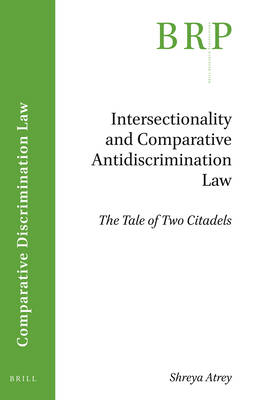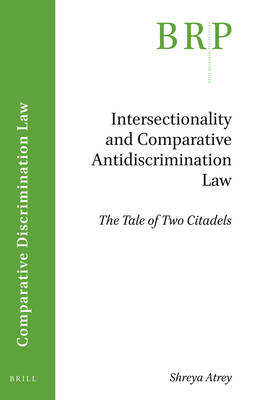
- Afhalen na 1 uur in een winkel met voorraad
- Gratis thuislevering in België vanaf € 30
- Ruim aanbod met 7 miljoen producten
- Afhalen na 1 uur in een winkel met voorraad
- Gratis thuislevering in België vanaf € 30
- Ruim aanbod met 7 miljoen producten
€ 143,45
+ 286 punten
Omschrijving
This volume in the Brill Research Perspectives in Comparative Discrimination Law addresses intersectionality from the lens of comparative antidiscrimination law. The term 'intersectionality' was coined by Kimberlé Williams Crenshaw in 1989. As a field, intersectionality has a longer history, of nearly two hundred years. Meanwhile, comparative antidiscrimination law as a field may be just over a few decades old. Thus, intersectionality's tryst with antidiscrimination law is a fairly recent one. Developed as a critique of antidiscrimination law, intersectionality has had a significant influence on it. Yet, intersectionality's logic does not seem to have infiltrated the logic of antidiscrimination law completely. Comparative antidiscrimination law continues to develop with intersectionality in sight, but rarely, in step. On the occasion of the 30th anniversary of Crenshaw's seminal article that coined the term in the context of antidiscrimination law, Shreya Atrey explores this irony. Her article provides a meta-narrative of the development of the two fields with the purpose of showing what appear to be orthogonal trajectories.
Specificaties
Betrokkenen
- Auteur(s):
- Uitgeverij:
Inhoud
- Aantal bladzijden:
- 92
- Taal:
- Engels
- Reeks:
Eigenschappen
- Productcode (EAN):
- 9789004382848
- Verschijningsdatum:
- 9/07/2020
- Uitvoering:
- Paperback
- Formaat:
- Trade paperback (VS)
- Afmetingen:
- 155 mm x 235 mm
- Gewicht:
- 152 g

Alleen bij Standaard Boekhandel
+ 286 punten op je klantenkaart van Standaard Boekhandel
Beoordelingen
We publiceren alleen reviews die voldoen aan de voorwaarden voor reviews. Bekijk onze voorwaarden voor reviews.










